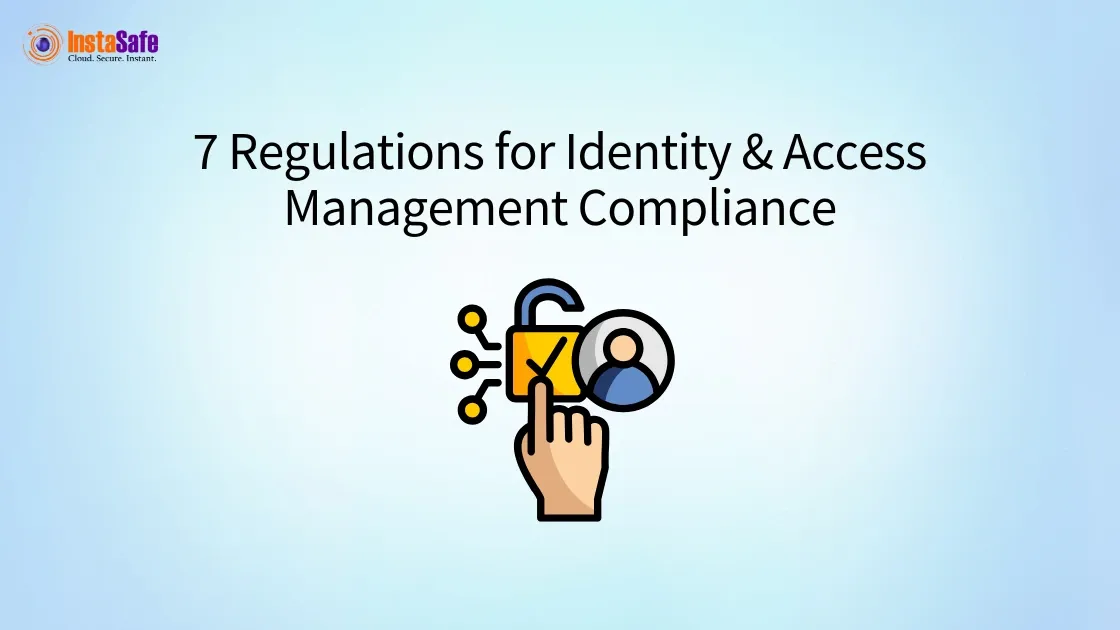7 Regulations for Identity & Access Management Compliance

Organisations face growing pressure to protect sensitive data while providing secure access to resources. With proper Identity and Access Management systems, businesses can meet stringent IAM compliance regulations across industries and regions.
These rules ensure companies handle user identities and access privileges to protect data and systems from unauthorised use and potential breaches. Let’s look at some of the most essential regulations that require IAM compliance from businesses.
Why Does IAM Policy Compliance Matter?
A single data breach from poor access management can damage your reputation and lead to legal problems that could take years to resolve. For the same reason, the IAM policy compliance requirements are not optional for modern businesses; they are indispensable. Implementing strong identity controls protects sensitive information, builds customer trust and avoids costly penalties.
Your business likely deals with several data protection laws that specifically address how you manage access to sensitive information. Understanding these rules helps you build security practices that satisfy multiple regulations at once, saving time and resources.
Overall, companies that implement proper identity and access management systems gain better security and streamlined operations while meeting legal requirements. Further, a robust IAM approach reduces risks across the organisation and helps prevent costly mistakes before they happen.
Key Global Regulations Affecting Identity and Access Management
ISO 27001
The International Organisation for Standardisation created ISO 27001 as a global framework for information security. This standard demands strong identity and access management practices, including:
- Strict user access provisioning based on job roles and business needs.
- Regular access rights reviews and prompt removal of departed employees.
- Password management systems with strong authentication requirements.
- Clear logging of user activities and system events for audit purposes.
- Secure network controls with proper segmentation to limit exposure.
- Management approval for privileged access to critical systems.
- Secure login procedures with strong verification methods.
ISO 27001 provides a baseline that helps organisations meet most IAM compliance regulations worldwide. Many organisations start their compliance journey with ISO 27001 as it provides a foundation for meeting other requirements.
Companies can use ISO certification to demonstrate their commitment to proper security practices to customers and partners. The standard emphasises ongoing monitoring and improvement rather than one-time compliance efforts. With this, businesses can keep strong security rules in place even as threats and needs change.
GDPR
The General Data Protection Regulation sets strict data protection laws for any organisation handling the personal information of European citizens. GDPR requires:
- Data protection by design and default in all systems.
- Strong encryption for sensitive personal data during storage and transmission.
- Ability to fulfil data subject access requests quickly and completely.
- Clear documentation of data processing activities and access controls.
- Processes to delete personal data when requested by individuals.
- Systems to track and report data breaches within 72 hours.
Under GDPR, organisations must implement identity and access management controls that limit data access to only authorised personnel with legitimate business needs. Companies must also track who accesses personal data and be able to remove this information when requested by the data subject.
Note that GDPR penalties can reach up to 4% of global annual revenue. This makes proper IAM policy compliance a financial priority for businesses operating in European markets. The regulation has influenced similar laws around the world, making GDPR compliance a good starting point for global operations.
HIPAA
Healthcare providers and their partners must follow the Health Insurance Portability and Accountability Act when handling patient data. HIPAA's security rules require:
- Administrative safeguards that reduce risks through proper IAM policy compliance.
- Role-based access control that follows the "minimum necessary" principle.
- Device security measures for all systems accessing patient data.
- Multi-factor authentication for sensitive systems and remote access.
- Verification procedures for all users requesting access to clinical systems.
- Regular security awareness training for all staff members.
- Automatic logoff from unattended workstations to prevent unauthorised access.
- Audit controls that record and examine system activity.
Healthcare businesses need effective identity and access control to avoid HIPAA penalties and reputation harm. Not just hospitals and clinics but also business affiliates that handle patient data must comply.
Healthcare organisations must balance the need for quick access in emergencies with the requirement to protect patient privacy. This makes carefully designed identity and access management systems especially important in medical settings.
PCI DSS
The Payment Card Industry Data Security Standard applies to any organisation that processes credit card data. PCI DSS demands strict IAM compliance regulations, including:
- Unique IDs for each person accessing systems that store payment data.
- Strong authentication measures for all users, especially administrators.
- Regular updates to security systems and access controls.
- Network security controls with proper segmentation to isolate payment systems.
- Special security policies for contractors and third parties accessing card data.
- Regular testing of security systems and access controls.
- Restriction of physical access to systems that store cardholder data.
- Tracking and monitoring of all access to network resources and data.
The PCI Security Standards Council regularly updates these requirements to address new threats, making ongoing IAM policy compliance necessary for organisations that handle payment card information.
To achieve compliance, companies must maintain detailed logs of who accesses payment systems and implement strict access controls. These requirements help prevent unauthorised access to financial information that could lead to fraud or identity theft.
Building a Compliant IAM Program
Creating a compliant identity and access management program requires several key components:
- Policy Development: Create clear policies that define how access is granted, managed and removed.
- Role-Based Access: Implement access controls based on job functions rather than individuals.
- Authentication Controls: Use multi-factor authentication for sensitive systems.
- Access Reviews: Regularly check who has access to what resources.
- User Activity Monitoring: Track and log all access attempts and system activities.
- Device Security: Ensure only trusted devices can access protected resources.
- Third-Party Management: Apply strict controls to vendors and partners.
By implementing these components, organisations can meet most IAM compliance regulations across different industries and regions.
Conclusion
IAM policy compliance protects your company and builds confidence besides helping you avoid hefty fines. The restrictions focus on restricting access, monitoring user activity and securing sensitive data.
By implementing strong identity and access management practices that align with these regulations, organisations can create a secure environment that meets global data protection laws while supporting business operations. The right IAM approach turns compliance from a burden into a business advantage.
InstaSafe Identity Cloud delivers comprehensive protection across today's complex regulatory landscape. Our solution harmonises seamless access with robust security, ensuring your organisation meets IAM regulations while protecting sensitive information.
With features addressing ISO 27001, GDPR, HIPAA, and PCI DSS requirements, InstaSafe transforms IAM policy compliance from a burden to a competitive edge.
Frequently Asked Questions (FAQs)
- What is the ISO standard for identity and access management?
ISO 27001 is the primary standard for IAM, focusing on information security management. It requires organisations to implement controls for identity verification and access management to protect sensitive data while meeting IAM compliance regulations and ensuring proper authentication practices.
- What is the difference between UAM and IAM?
UAM (User Access Management) focuses specifically on managing user access rights within specific systems. IAM (Identity and Access Management) is broader, covering the identity lifecycle, authentication, authorisation and governance across all organisational systems while ensuring IAM policy compliance and comprehensive security controls.
- What are IAM requirements?
Core IAM requirements include robust authentication methods, authorisation controls, centralised identity management, access monitoring, automated provisioning, regular audits and compliance with data protection laws.
Identity and access management implementations must address regulatory requirements, security best practices and proper documentation procedures.
